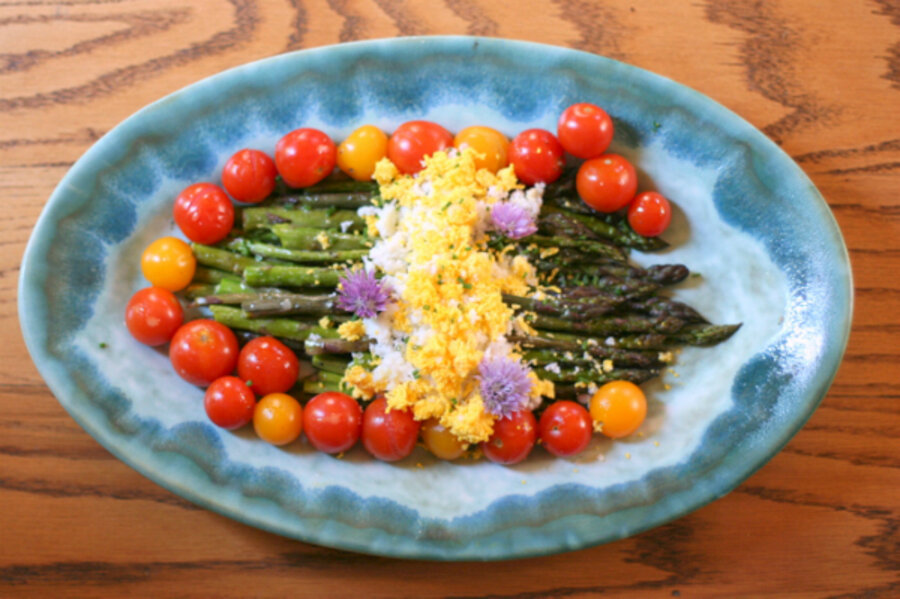By Perre Coleman Magness, The Runaway Spoon
Serves 6
For the asparagus:
1 pound asparagus
2 tablespoons olive oil
salt and pepper
For the dressing:
Juice of one medium lemon (about 3 tablespoons)
2 tablespoons olive oil
1 teaspoon Dijon mustard
2 hard boiled eggs
1. Heat to oven to 400 degrees F. Break any thick woody stems from the asparagus by just snapping them off. Place the asparagus on a rimmed baking sheet and then toss with the oil until each spear is coated. Spread the spears in one even layer. Sprinkle with salt and pepper and roast until tender, but still with some bite left to them, about 12 to 15 minutes.
2. While the asparagus are cooking, whisk together the lemon juice, olive oil, and mustard until smooth and emulsified. Remove the baked asparagus to a platter and toss with the dressing.
3. Cut the eggs in half and pop out the yolks. Press the whites, one half at a time, through a wire mesh strainer, then do the same for the yolks. Use a spatula or the back of a spoon to push them through. I like to do this onto a plate into a pile of whites and pile of yolks, then carefully arrange them over the asparagus.
4. The asparagus can be roasted and dressed a few hours ahead. Add the eggs just before serving.
Notes: In the picture above, I added some color with a few cherry tomatoes and some chive blossoms I purchased at the farmers market.
Read the full post on Stir It Up!








